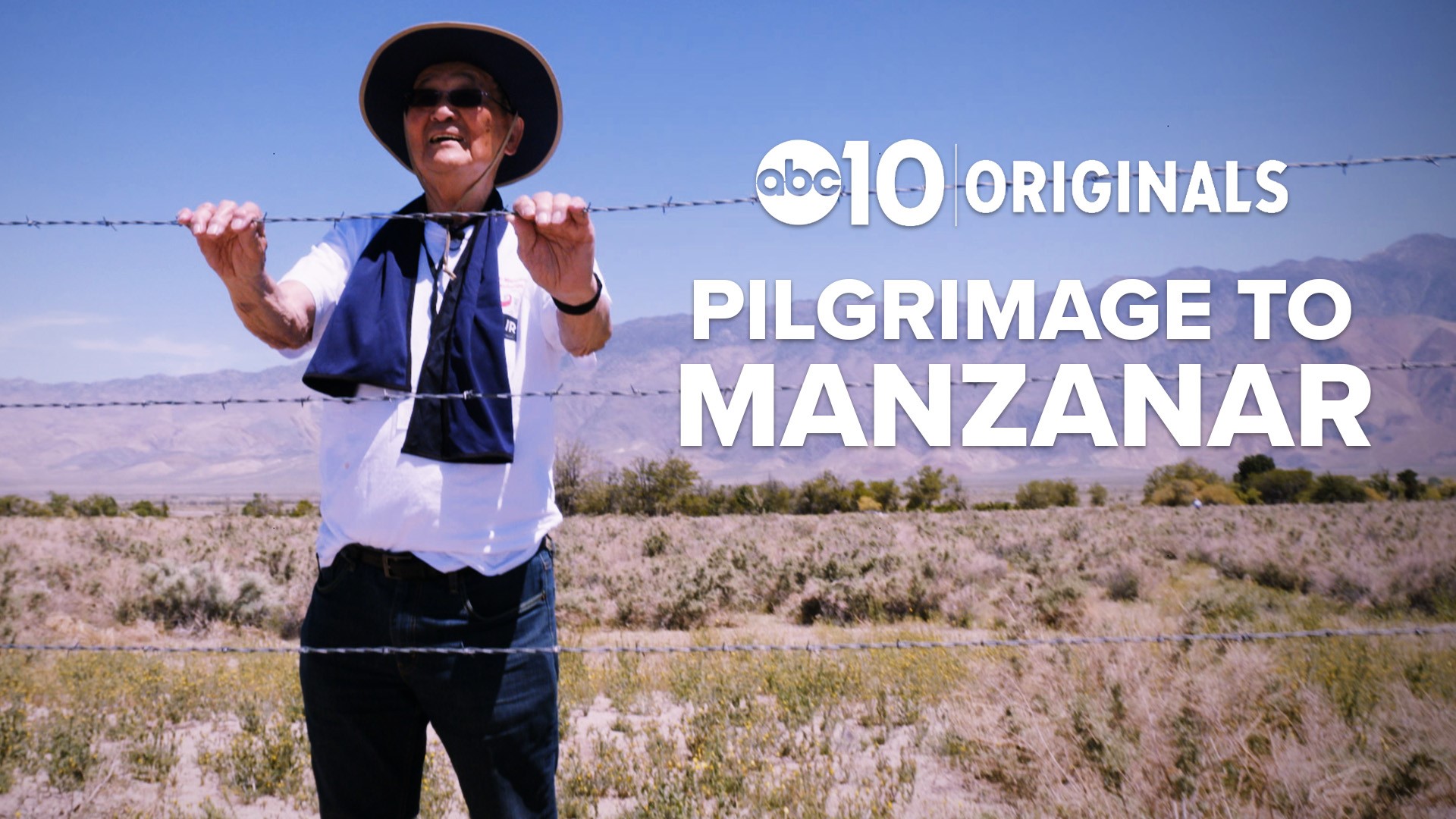MANZANAR, Calif. — The federal government made one of the darkest decisions in American history following the attack on Pearl Harbor. President Franklin Roosevelt signed Executive Order 9066, often called the Japanese Relocation Act.
In a matter of months, more than 120,000 people of Japanese descent were forcibly removed from their homes and bussed to one of 10 different internment camps built in the western United States.
One of those internment camps was Manzanar — a dusty, arid plot of land just outside of Death Valley. The federal government told the Japanese the internment camps were for their own safety and incarcerated them for three years.
Now, more than 70 years after WWII ended, a group of former incarcerees with the Florin Chapter of Japanese American Citizens League make an annual pilgrimage from Sacramento to Manzanar National Historic Site.
“For me, as a 7-year-old kid, camp was barbed wire and guard towers,” said Stanley Umeda, a former incarceree at Jerome Arkansas.
Umeda has made the pilgrimage to Manzanar more than 15 times because it is one of the best preserved internment camps in the U.S.
“I recall this place more as a place of honor than disgrace because this is where we survived,” said Umeda.
Despite the propaganda put out by the federal government, survival was hard and conditions were harsh. Gary Yamamoto’s parents grew up farming in the Sacramento Valley. Both lived separate lives until they were forced to abandon their homes and move to Manzanar.
“Right from the get-go it was hell for them first not knowing why they were here, especially because they didn’t speak English,” said Yamamoto. “They were overwhelmed. I mean they had 48 hours to pack up and carry as much as they could.”
Privacy at Manzanar was basically non-existent. Public toilets had no walls, the makeshift shelters had no partitions and everyone was exposed to the elements. Despite the conditions, Gary’s parents found love.
“Manzanar is where they met. This is where they fell in love and this is where they got married,” said Yamamoto.
This was Yamamoto’s first trip to Manzanar. His mother and father spoke very little about their experience, but he does remember stories of their wedding night.
“Their honeymoon was where the rest of the family moved over to another families barracks temporarily so my mom and dad could have privacy on their wedding night,” said Yamamoto.
Children who were sent to internment camps are some of the only incarcerated people living today. In the 1940s, the federal government’s propaganda painted a rosy picture of treatment inside the camps, but throughout her adulthood Christine Asooumda had nightmares from ill treatment she and her family received.
“Essentially my dream was being placed in a panel truck, the door slams, it's dark and I am screaming," said Asooumda.
The nightmare Christine had comes from her memory of catching pneumonia and being forced to recover in a hospital alone. For whatever reason, after her recovery, Christine and her family were relocated to two different camps — Tule Lake California and Topaz, Utah. Like many children in the internment camps, trauma follows Christine, but she feels a need to visit internment camps and share her story.
“This happened to us, but what is that lesson to be learned? In 1942 we didn’t have a voice, we didn’t have political leaders, no one supported us, and no one knew us. Now we have a voice, and we need to stand up and speak out for others,” said Asooumda.
It would take more than 40 years for the federal government to admit they were wrong. In 1988, President Ronald Reagan signed a bill giving surviving members of the internment camps reparations of $20,000.
“They had never apologized before. That was the first apology and it meant so much to get that letter of apology,” said Asooumda.
Just 13 years after president Reagan’s apology, America almost made the same mistake again. The terrorist attack on the World Trade Center caused hatred towards the Muslim community.
“Our country has not really learned because during 9/11 they were already considering rounding up Muslims,” said Asooumda.
Manzanar National Historic Site is there for people to remember. A site for people to remember the wrongs the federal government committed towards people of Japanese descent living in America.
“Those of us who have survived these camps must share in order so that it will not happen again,” said Umeda.
MORE AAPI STORIES: How a community cookbook is preserving AAPI history, traditions and culture.



















